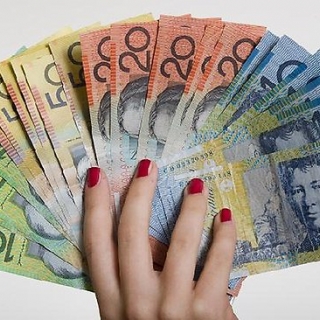


The Australian dollar (AUD) continued its upward momentum against the US dollar (USD) for the third straight session on Friday (1/24). The AUD/USD pair gained traction after the People's Bank of China (PBOC) conducted a medium-term lending operation.
The Chinese central bank kept interest rates at 2.00% and injected 200 billion yuan ($27.46 billion) through a one-year medium-term lending facility (MLF) to certain financial institutions, according to Reuters.
Traders are likely to keep an eye on the release of the preliminary US S&P Global Purchasing Managers' Index (PMI) and the Michigan Consumer Sentiment Index for January.
Australia's Judo Bank Composite Purchasing Managers' Index (PMI) edged up to 50.3 in January, up from 50.2 in December. This marked the fourth straight month of modest private sector expansion, driven by growth in the services sector while manufacturing output held steady.
The Judo Bank Manufacturing PMI rose to 49.8 in January from 47.8 in December, the highest reading in 12 months, snapping a 13-month contraction streak. However, the Services PMI fell to 50.4 from 50.8, hitting a six-month low and indicating a slowdown in growth in the sector.
On Thursday, Chinese authorities introduced several measures to stabilize its stock market, including allowing pension funds to increase investment in domestic equities. A pilot scheme allowing insurance companies to buy equities will be launched in the first half of 2025, with an initial scale of at least 100 billion yuan. Meanwhile, the People's Bank of China (PBOC) said it "will expand the scope and increase the scale of liquidity tools to fund equity purchases at an appropriate time." (AL)
Source: FXstreet
The Australian Dollar (AUD) loses ground on Wednesday for the second consecutive day. The AUD/USD pair struggles as the US Dollar (USD) extends its gains despite the United States (US) Nonfarm Payroll...
The Australian Dollar (AUD) is under pressure against the US Dollar (USD) on Thursday, with AUD/USD down almost 0.50%, trading near 0.6510 at the time of writing. The pullback reflects broad Greenback...
The Australian dollar was little changed to around $0.654 on Thursday, holding its recent gains, supported by stronger-than-expected trade balance figures. Australia's goods trade surplus widened to A...
The Australian dollar was little changed to around $0.652 on Wednesday, after a 0.5% drop in the previous session, as strength in the US dollar offset upbeat domestic GDP data. The greenback held firm...
The Australian dollar weakened to around $0.654 on Tuesday, snapping a five-session winning streak, as investors paused amid a mix of domestic economic signals. Notably, Australia's current account de...
Gold price surges on Wednesday, up by over 0.60%, folllowing US inflation data, which increased speculation that the Federal Reserve (Fed) will resume its easing cycle at the upcoming September meeting. At the time of writing, XAU/USD trades at...
The Swiss Franc (CHF) strengthens modestly against the US Dollar (USD) on Wednesday, with USD/CHF trimming intraday gains as the Greenback softens after softer-than-expected US Producer Price Index (PPI) figures further cemented market expectations...
Oil prices settled higher on Wednesday by more than $1 a barrel as investors worried about possible supply disruptions after Poland downed drones in its airspace and the U.S. pushed for new sanctions on buyers of Russian oil the day after an...
 The United States (US) Bureau of Labor Statistics (BLS) will publish the 2025 preliminary benchmark revision to the Establishment Survey Data on...
The United States (US) Bureau of Labor Statistics (BLS) will publish the 2025 preliminary benchmark revision to the Establishment Survey Data on...
 Russian forces attacked a thermal power plant in the Kyiv region as part of an overnight attack, Ukraine's Energy Ministry said on Monday,...
Russian forces attacked a thermal power plant in the Kyiv region as part of an overnight attack, Ukraine's Energy Ministry said on Monday,...
 The US Bureau of Labor Statistics reported on Tuesday that the preliminary estimate of the Current Employment Statistics (CES) national benchmark...
The US Bureau of Labor Statistics reported on Tuesday that the preliminary estimate of the Current Employment Statistics (CES) national benchmark...
 European shares finished higher on Monday, while French stocks also rose as investors stayed calm in the run-up to a no-confidence vote later in the...
European shares finished higher on Monday, while French stocks also rose as investors stayed calm in the run-up to a no-confidence vote later in the...